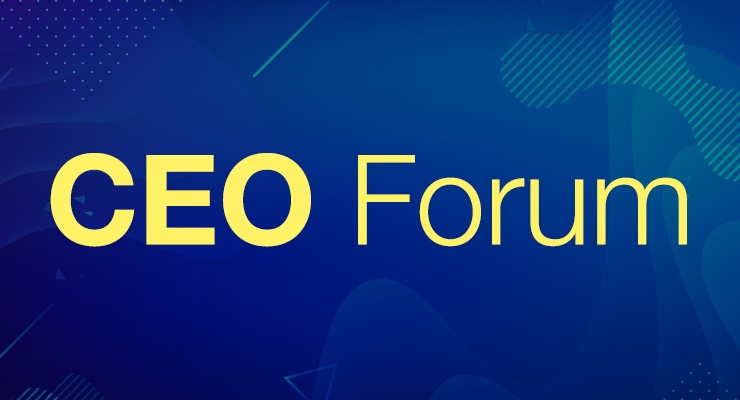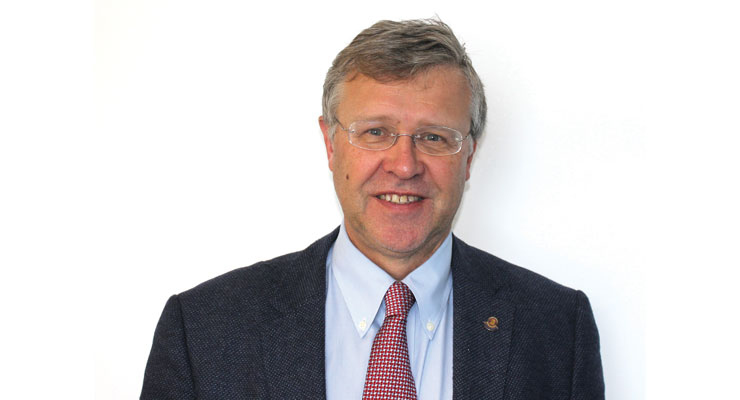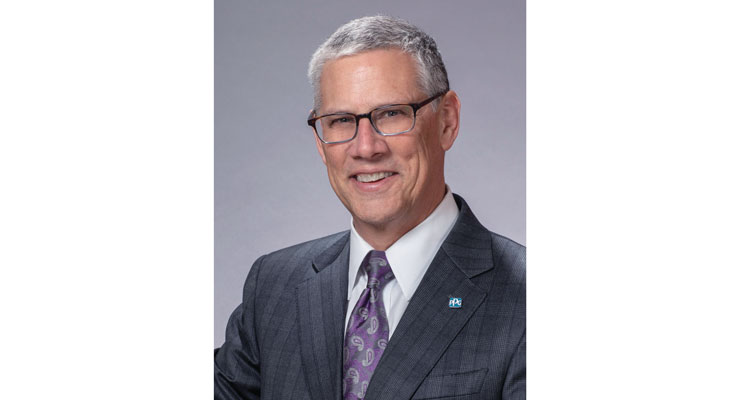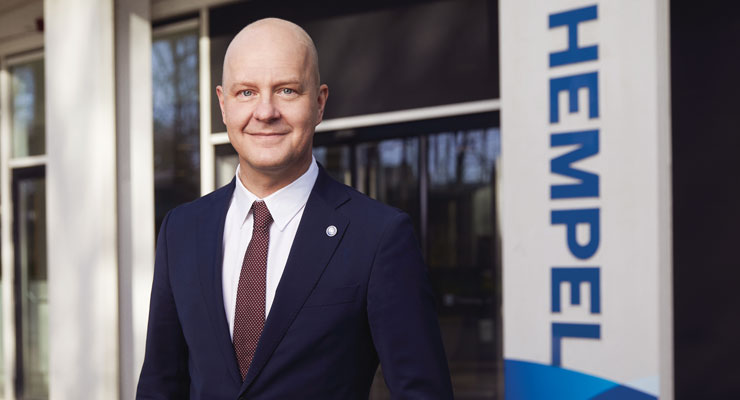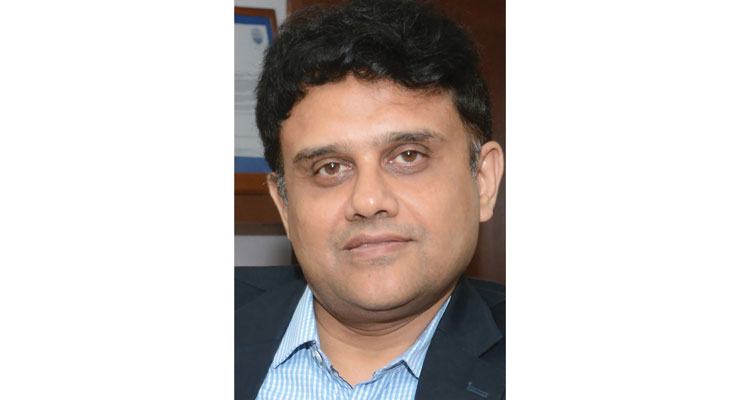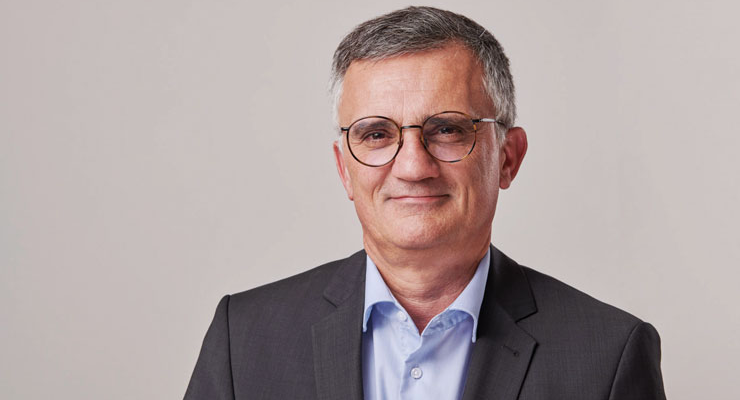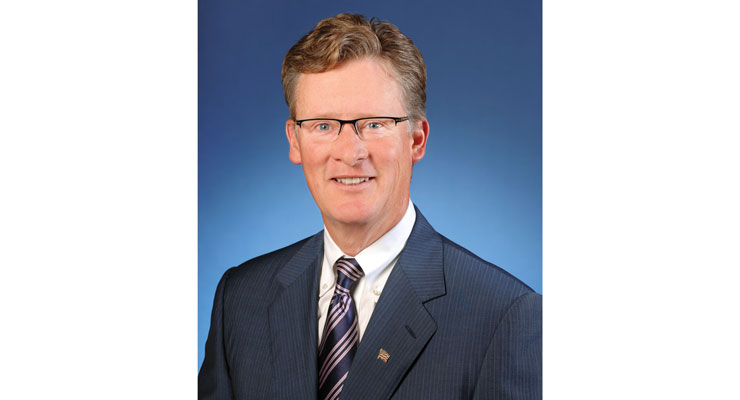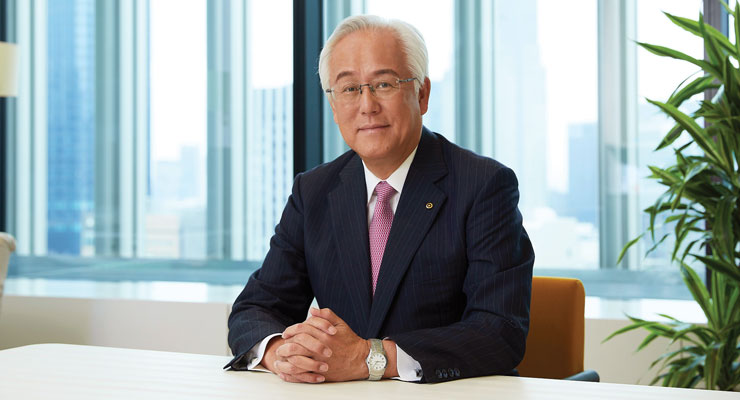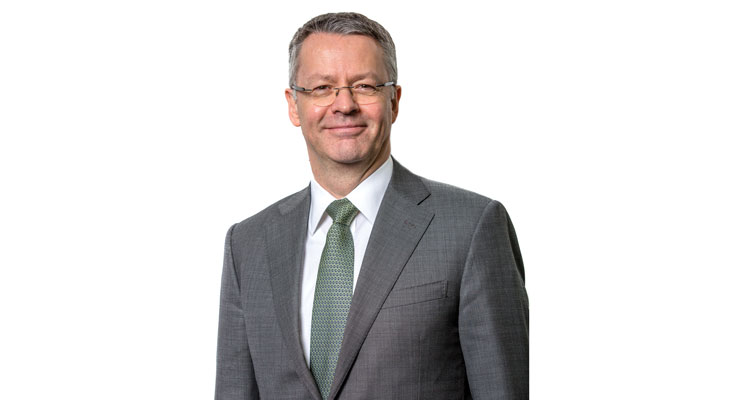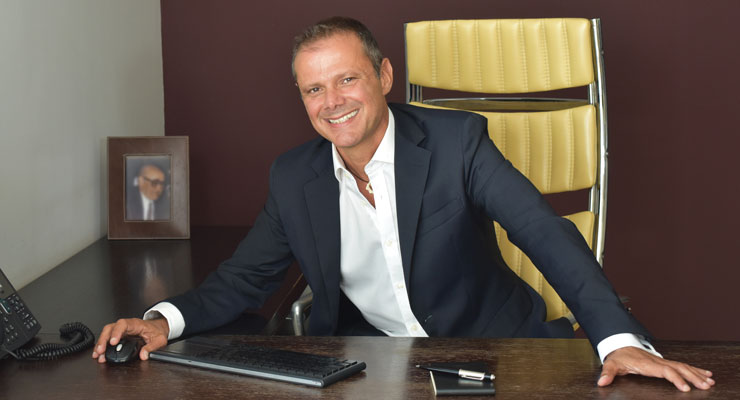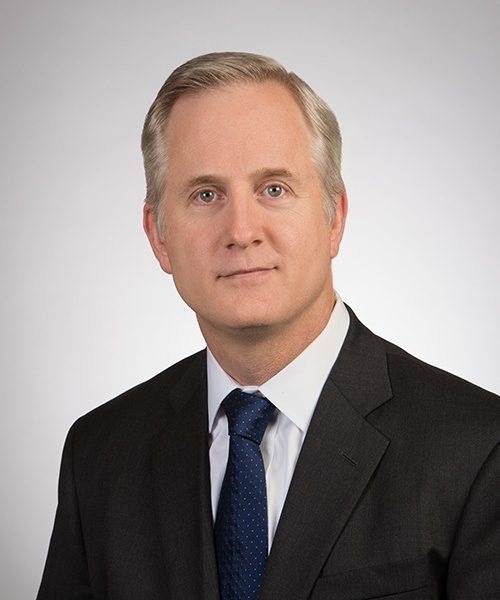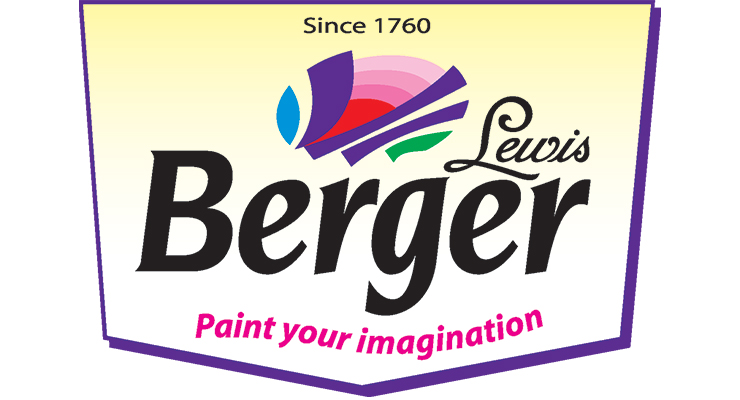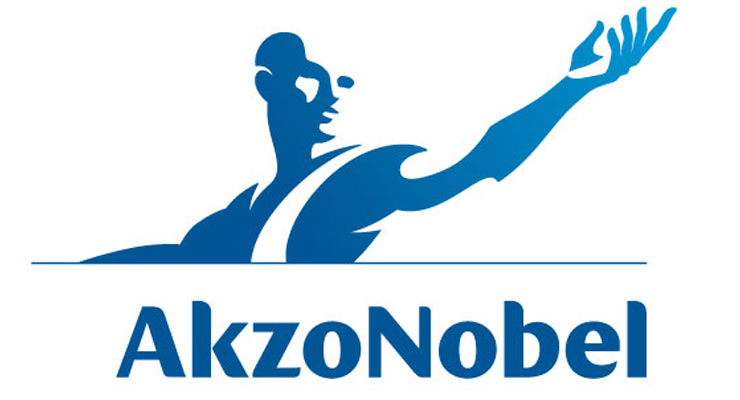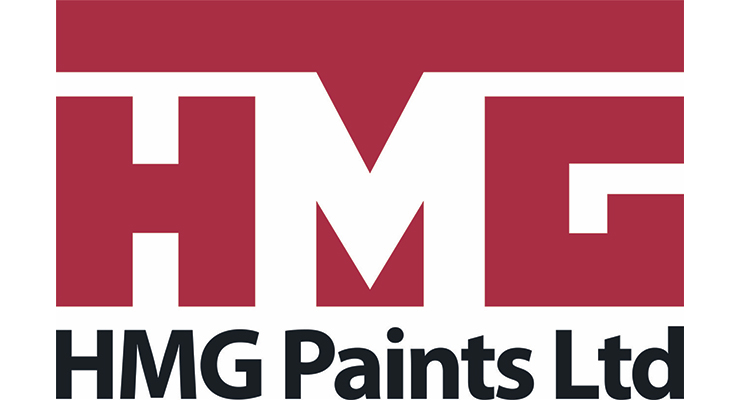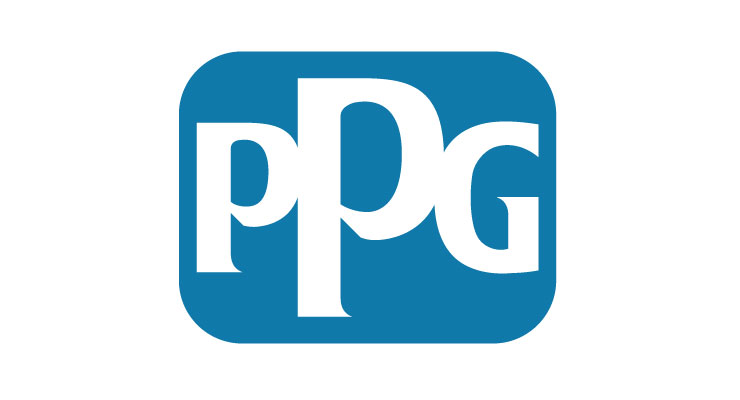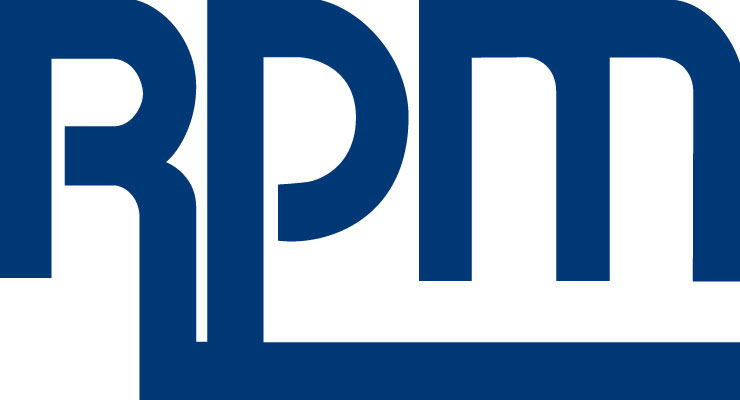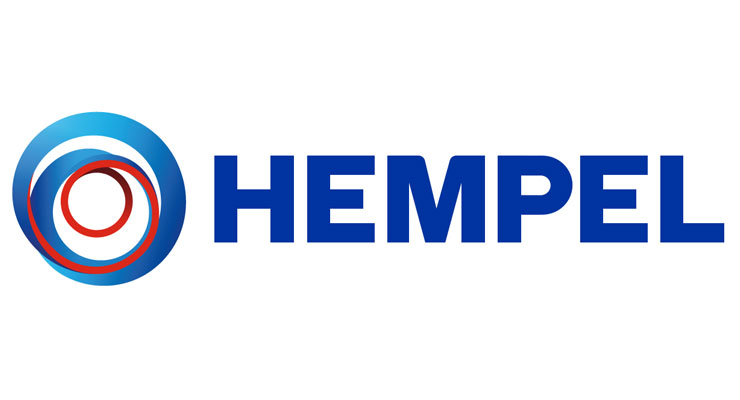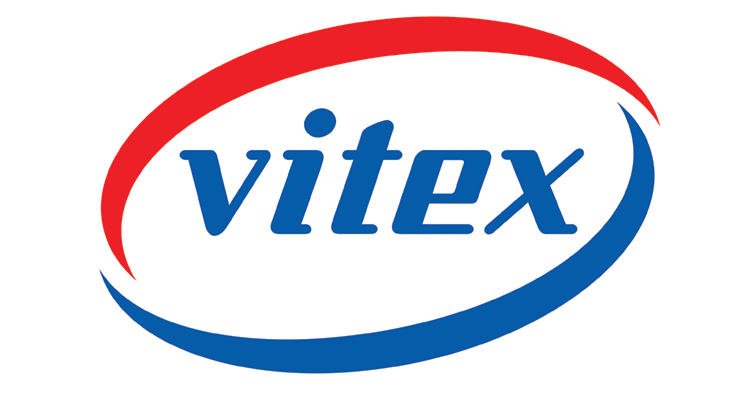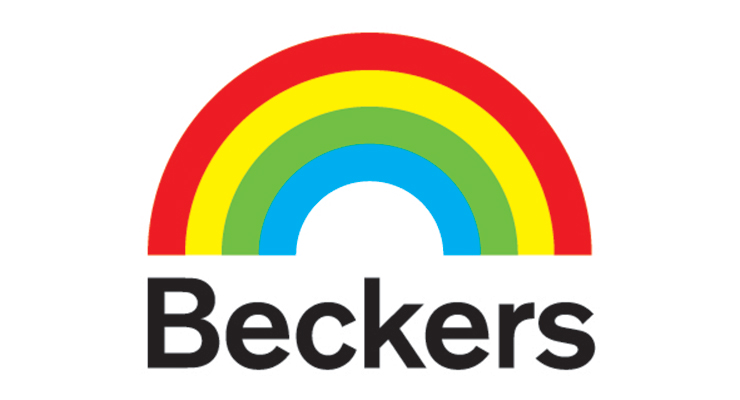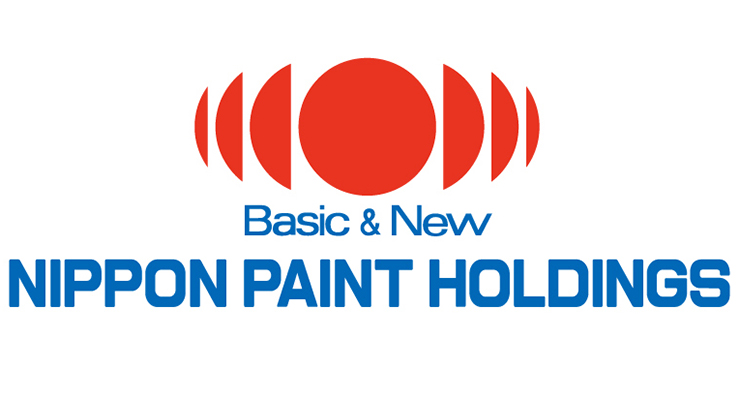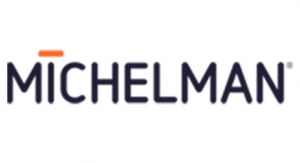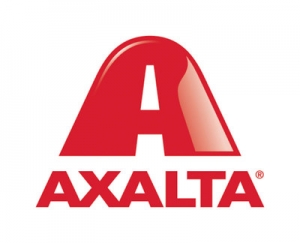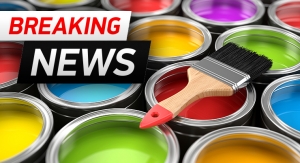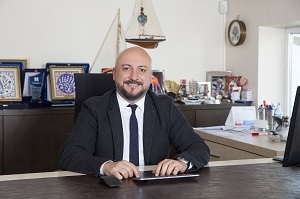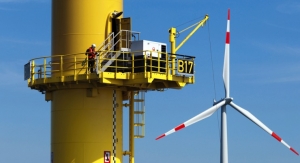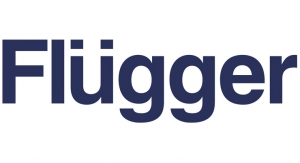Kerry Pianoforte, Editor03.12.21
Coatings World’s 2021 CEO Forum features executives from 10 coatings companies offering their insights on the state of the industry. This year’s forum includes CEOs from leading coatings companies from the U.S., Europe and Asia Pacific.
The participants are John Falder, CEO, HMG Paints; Michael H. McGarry, chairman and CEO, PPG Industries; Lars Petersson, president and CEO, Hempel Group; Abhijit Roy, CEO, Berger Paints; Christophe Sabas, CEO, Beckers Group; Frank Sullivan, CEO, RPM; Masaaki Tanaka, chairman, president & CEO, Nippon Paint and Thierry Vanlancker, CEO, AkzoNobel, Armodios Yannidis, CEO, Vitex S.A., and Robert Bryant, CEO, Axalta.
CW: How did the market for paints and coatings fare overall in 2020?
Falder: The UK paints and coatings market was extremely turbulent during 2020 due to the COVID pandemic. With the various stages of lockdowns, we saw fluctuations in market demand and also in the capacity of our suppliers. Additionally, with the looming Brexit, planning and preparation for 2021 had an impact on the purchase of raw materials and sales especially towards the end of 2020 which saw HMG have its best-ever December. The UK industrial coatings market was subdued throughout the year but the Decorative market saw growth with the nation being required to stay at home.
McGarry: The coronavirus pandemic has affected the coatings industry overall and PPG’s global business in many ways. At the onset of the pandemic, with almost all countries sheltering in place for an extended period, travel slowed and as a result dampened demand in several coatings end-use markets, including aerospace, automotive refinish and automotive original equipment manufacturers (OEMs).
On the other hand, we saw an increase in demand in 2020 in other markets, including our packaging coatings business, which benefited from pantry stocking, and our architectural coatings business. As much of the world continued to spend more time at home, homeowners have taken a closer look at their spaces, evaluating how they function and how it makes them feel.
Between creating a home office to changing the wall color in a bedroom, PPG has seen a surge in DIY paint demand. The pandemic has also impacted the way customers purchase paint, with a growing number of homeowners and pro painters purchasing paint and home improvement supplies online for delivery or in-store pickup.
Petersson: With the COVID-19 pandemic, everything came to a halt in the first quarter of 2020. We started seeing infrastructure projects being postponed or canceled, which led to a general decline in the coatings industry globally. Overall, the marine market had a strong year. This was primarily driven by dry dockings, with a relatively strong demand for repair and maintenance as well as scrubber installation. The newbuild market, however, struggled with low-order books, but we see signs of soft recovery in the years to come. The decorative paints segment was fairly buoyant, driven by particularly strong demand in the Do-It-Yourself market.
Roy: The pandemic of 2020 presented a unique set of challenges to the paints and coatings industry in India. It was May by the time markets could gradually start emerging from the country-wide lockdown. Domestic consumer confidence that was initially quite low due to hygiene considerations recovered fairly quickly by July. Other sectors like automotive, industrial and protective coatings have been slower off the block as was expected. As far as Berger is concerned we reported good results in July to September and a much better result in October to December period with record top-line and bottom-line growth. Raw material prices have been hardening of late and most players in the industry are evaluating the wisdom of a price increase.
Sabas: I am proud that despite the COVID-19 restrictions, we have been able to provide the same level of service quality and have not experienced many problems. Like other companies, Beckers was impacted across the globe in 2020. In Q1 and Q2 2020 our business decreased, but then improved in Q3 and Q4. We are not yet at pre-COVID results but overall, 2020 was a satisfactory year.
Another characteristic of 2020 was travel restrictions, which continue to this day. While the business was back to a satisfactory level at the end of 2020, the pandemic is still impacting us as we cannot travel as much as we would like. All in all, the whole supply chain – from our suppliers to our customers – has been resilient and working together and supporting each other. It is easy to say this now in hindsight, but during the toughest months in March and April 2020, it was not immediately obvious how to maintain stable product delivery.
The pandemic forced us to implement a new remote working policy, and we discovered that we could make it work well. I don’t think we will ever return to pre-pandemic levels of traveling.
2020 also changed how we look at our own people in terms of management. It reinforced our belief in trusting people. We do not have a single bad example where it didn’t work. Now we have to take care of those people in our team who, a year later, are beginning to feel isolated in remote settings. For them we are focusing on creating team experiences via digital media.
For example, each week we invite team members working on a project to come together to chat about anything, except business.
Sullivan: Like most industries, paints and coatings businesses were impacted by the COVID-19 pandemic during 2020. Our Consumer Group experienced unprecedented demand as consumers completed more DIY home improvement projects while spending more time at home during the pandemic.
In industrial markets, some businesses were deemed essential while others experienced moderate disruption. Overall, our industrial businesses fared better in the U.S., where construction was generally deemed an essential industry and continued to operate with moderate disruption versus certain international markets, where construction was not considered essential and resulted in sales declines.
In response to the economic downturn created by the pandemic, we quickly took proactive measures to accelerate our MAP to Growth operating improvement program’s cost-
reduction initiatives.
Tanaka: In 2020, paints and coatings production in Japan was weak. Total production was approximately 921,100 tons, a decrease of 16.4% from 2019. On the other hand, DIY sales in Japan at home improvement stores increased by about 10% YoY in 2020, based on sales from January to November, which shows signs of improvement.
In the automotive coatings market, automobile production in Japan decreased by 16% YoY to 7.71 million units but production in China recovered almost to the prior-year level at around 25.22 million units (Source: Nippon Paint Holdings’ financial results presentation material for FY2020). We estimate that automobile demand will recover after bottoming out in 2020.
However, the recovery of automobile production is projected to be moderate. According to automobile production data released by IHS, worldwide automobile production is forecast to be 83 million units in 2021, 87 million units in 2022, and 90 million units in 2023.
China decorative paints market since the lockdowns were lifted, new construction projects recovered, and the demand for repainting existing houses was robust from July 2020 onwards.
Vanlancker: Our 2020 results demonstrate structural performance improvement from the first phase of our transformation. Despite COVID-19 headwinds, we rose to the challenge and delivered our 15 by 20 promise, achieving 15% return on sales and more than 20% return on investment.
We continued to look after our customers and everyone at AkzoNobel deserves enormous credit for their passion and commitment, especially in such a challenging year. We’ve now achieved organic growth for two quarters in a row and announced acquisitions including Titan Paints in Spain and New Nautical Coatings in the US. We transformed our systems and processes and expanded our industry-leading Paint the Future innovation ecosystem. We’ve also accelerated our People. Planet. Paint. approach to sustainability and been recognized by key benchmarks as the leader in the paints and coatings industry.
What’s really exciting is that we’re literally only half-way through our transformation to reclaim our position as the reference in the industry. Our new Grow & Deliver strategy represents the second stage of our journey – which began in 2017 – to double the profit of AkzoNobel.
Yannidis: Vitex is primarily active in South East Europe, with architectural coatings and construction solutions. Demand was constantly affected by the measures taken against the pandemic, creating deep valleys but also high peaks. The fluctuations strained the supply chain while raw materials unavailability and logistics’ hurdles created a very challenging situation especially for companies like ours that implemented hygienic standards of very high level. At the end of the year, Vitex recorded sales growth of 8%, EBITDA of 16% and higher liquidity.
Bryant: 2020 was a tumultuous year for everyone because of the pandemic. The coatings market saw early impacts from China during the first quarter followed by a dramatic drop in the second quarter as several of our end markets began to feel the effects of the pandemic. At the lowest point, our Refinish business dropped to around 50% in Q2, which aligned with the dramatic reduction in time that people were spending on vehicles. We were pleased to see stronger than anticipated recovery beginning in the summer that carried through the lockdowns in mid-November. Outside of the Transportation Coatings segment, the impact to the Performance Coatings segment was less severe with almost complete recovery by the end of Q4.
CW: What actions did your company take to mitigate the negative impact of the pandemic on the coatings market?
Falder: As an extremely agile company HMG were able to transform a paint production department into one producing Hand Sanitiser within 48 hours. The company developed the First Thing Sanitiser, which contains over 70% alcohol, after staff and their families reported being unable to find stocks at other locations. The First Thing name derives from internal communication messages urging staff to make washing their hands the first thing on their mind whether in work or at home. The first batch of First Thing Sanitiser saw donations made to Greater Manchester Police along with local care homes, charities and frontline workers. Changes to the way we work with customers were also key to maintaining and developing relationships in 2020, the company rolled out video technology to facilitate meetings, technical support and even product showcases, likewise our digital sales channels saw an increase of 300% during 2020 as customers behaviors changed with the pandemic restrictions.
McGarry: Given PPG’s presence in the Asia-Pacific region, including an automotive coatings manufacturing facility in Wuhan, China, PPG began managing challenges related to the COVID-19 pandemic early in 2020. The health and safety of PPG employees, partners and customers remains the company’s most important core value. Through much of 2020, and continuing today, we have enacted proven, safe operating process that have been used around the world to keep PPG people safe, including best practice hygiene techniques, mandatory mask wearing, social distancing, and establishing work-from-home protocols where possible.
For our business, the resiliency of our coatings model shone brightly, once again. The lessons learned from past global financial crises were significantly enhanced and the speed of execution from our global team was exceptional. Our business portfolio demonstrated a swift recovery of operating margins and record adjusted earnings per share in the second half of the year, up nearly 20 percent compared to the prior year. We are bringing this sustained momentum into 2021.
Our products played an essential role in a wide range of key industries during the pandemic. Our paints, coatings and specialty materials helped create life-critical products for the health care, defense, food and beverage, hygiene, agriculture, energy, public works, electronics industries and many others.
More directly, we focused on using our existing products and new innovations to support and protect our global customers. For example, we pivoted a U.S. paint manufacturing line to provide 100,000 gallons of hand sanitizer for 1,900 THE HOME DEPOT stores.
We also joined forces with Corning Inc. to seek U.S. Environmental Protection Agency (EPA) approval for a paint product that incorporates Corning’s new glass-ceramic Guardiant technology. This technology has proven to kill more than 99.9% of SARS-CoV-2, which is the virus that causes COVID-19. Following registration with the U.S. EPA, we plan to launch a paint product to provide customers with an additional safeguard from COVID-19 in environments that pose a higher health risk, such as healthcare facilities and the hospitality industry.
Petersson: When the pandemic hit, our first priority was to ensure the health and safety of our employees, customers and partners, and we implemented various precautionary measures and guidelines across the organization. Our second priority was maintaining a timely global coatings supply, while ensuring the well-being of our customers and partners. The COVID-19 pandemic required us to be agile and flexible. For example, we produced some coatings for the Chinese market elsewhere, such as Malaysia and the Middle East. At the same time, we moved from physical meetings to online meetings and saw an increase in the use of other digital solutions, such as our online customer portal My Hempel. Within our Decorative segment, we strengthened our online ordering Click and Collect system in the UK and Ireland. All of our initiatives enabled us to continue serving our customers both locally and globally, as well as remain focused on our strategic priorities.
Roy: In anticipation of a protracted recovery, we conducted a cost rationalization exercise and improved efficiencies in rent, travel, RM cost and freight among other areas. At no point did we however consider retrenching people to save cost. In fact, Berger Paints has made zero retrenchments, honoured all campus offers and offered salary hikes and ESOPs to those who have earned it. Our attention was and continues to be on ensuring that employees across all locations are healthy and safe as well as educated on and compliant with Covid-related precautions.
On the technology front, we accelerated the pace of ongoing digitization and automation efforts whether in production and planning processes or in field operations.
On the product front, we were able to quickly launch a slew of products ranging from an interior emulsion that is low VOC, anti-pollutant and kills most bacteria and virus including the COVID-19 virus, a disinfectant spray that keeps surfaces free of COVID-19 virus for 24 hours, a WHO approved Hand sanitizer, a tool for measuring moisture content on walls based on which products can be recommended for waterproofing.
In the consumer services space, we upgraded our market-leading home painting service with a digital enabled and no contact experience for the consumer offering stringent safety and hygiene protocols.
Sabas: Our priorities and focus were the safety of our employees and the service to our customers. A small thing has had a tremendous impact on the secure work experience of our people: at the beginning of the first lockdown in Italy and France, we immediately decided to organize 2-hour calls 3 times per week with all the site managers all over the globe. Because of this, the site managers discovered that they were not alone, but that all of their peers had the same problems. Each of them had 5 minutes to share which actions they were implementing, that way they could learn from one another.
For our customers, we immediately implemented a crisis task force, whose first job was to contact all our suppliers immediately to ensure continuation of our service. During the first two weeks of the lockdown this proved critical. For our customers, we took immediate care of the supply chain and quickly built a new procedure around our technical support to allow us to minimize travel for our representatives to limit their risk exposure. Together with our customers, we developed a very simple questionnaire to easily assess whether their technical support request was urgent and important. If it was, we would send a travel support representative; if a request proved important but not urgent, we would postpone. We appointed a central person who was solely responsible for making these decisions, monitoring COVID not just country by country, but region by region.
Sullivan: At RPM, our priorities are to protect the health and well-being of our associates and their family members, support our local communities to control the spread of the virus, and serve our customers by maintaining the continuity and success of our business operations. We have established many protocols across our operations. We are taking precautions in our facilities to keep our people safe by aggressively cleaning and disinfecting high-touch areas, practicing social distancing and good hygiene, wearing masks and screening for COVID-19 symptoms prior to entry.
This has allowed us to minimize facility shutdowns and steadily manufacture products during the pandemic. Operational improvements on the procurement front have allowed us to manage and streamline the supply chain, which enabled us to minimize disruption in terms of raw materials. Additionally, on the industrial side, we have focused on renovation and restoration projects, which have been made easier with facilities temporarily closed.
Tanaka: Nippon Paint Holdings responded quickly and appropriately to the COVID-19 pandemic in 2020. We took actions to speed up our operations worldwide amid the COVID-19 pandemic in accordance with the following three basic policies. Protect employees and their families from coronavirus infections , procure funds to protect the Group’s businesses around the world and have sound business continuity plan.
In 2020, our Group’s sales were obviously impacted to a certain degree by the COVID-19 pandemic that severely hit the global economy. As a result, revenue and operating profit decreased at our businesses in Japan. However, our Group’s overseas partner companies, including NIPSEA Group in Asia, DuluxGroup in Australia, Dunn-Edwards in the Americas, and Betek Boya in Turkey, achieved a quick recovery from the impact of the pandemic by leveraging strengths in areas where they operate. Their strong earnings significantly contributed to our record-high revenue and operating profit.
Vanlancker: We have adapted ourselves. Thanks to the agility of the organization we managed to control the situation. The pandemic situation is being closely monitored. We have been taking maximum precautions to ensure the safety and well-being of employees. In many regions, employees are working from home where possible. Appropriate measures are being taken to continue serving customers and save costs. At the same time keeping the organization intact and able to respond quickly to changes in end market demand. An overall positive impact was noted for the Decorative Paints segment, whereas there was an overall adverse impact in the Performance Coatings segment.
Yannidis: We invested in increasing inventory and secured the supply of our products to our customers. We hired more people to increase our service level and customer satisfaction - 85 more people account for 31% increase of Human capital. Switching many procedures into digital was of course required, however we did so with a philosophy to promote distant socializing instead of social distancing. Our digital communication footprint was enlarged, and alternative customer contact has been achieved.
Bryant: At the onset of the pandemic, Axalta took swift action to ensure the health and safety of our employees while maintaining operations and support for our customers. We streamlined our procedures and rapidly embraced remote work for non-operations team members. We took steps to promote social distancing, instituted robust on-site hygiene practices, equipped plant personnel with critical personal protective equipment (PPE), performed daily health screenings, and rolled out enhanced sanitation and disinfecting practices at our sites.
CW: What areas of the paint and coatings market represent the most growth opportunities for your company?
Falder: HMG foresee growth across a number of business areas, the decorative coatings market is a huge potential opportunity for the company not just with the HMG branded products but working alongside entrepreneurial start up brands who are leveraging digital sales channels. HMG is uniquely positioned to provide market leading products with flexible MOQ’s and batch sizes that allow brands to enter markets in a short time frame at a competitive price. The launch of the company’s new color box also presents huge growth opportunity for HMG and our distribution partners who now have access to 2400 chromatically ordered color chips.
McGarry: Digital tools, e-commerce and seamless product fulfillment: The paint industry has reached a pivotal moment where customers have become even more comfortable with – and oftentimes expect – an easy-to-navigate e-commerce experience and seamless pick-up and delivery options. COVID-19 has accelerated the need for these types of digitally-driven buying models, and we as manufacturers have a responsibility to continue to anticipate our customer needs in a post-COVID world.
To proactively address evolving customer needs and serve professional painters faster and better than before, PPG recently introduced a digitally-enabled fulfillment pilot in Indianapolis.
Comprised of regional service centers as fulfillment hubs and a new digital platform, the model has added convenience and ease of purchase for customers, including 24/7 order placement, extended store operations and delivery hours, and improved product availability.
PPG is committed to proactively addressing our customers’ evolving needs, leading the paint industry’s digital evolution, and serving professional painters as a true collaborative partner.
By integrating digital tools into the paint buying experience for both professional and DIY customers, we’re making the inspiration and purchase process easier than ever before.
Autonomous, connected, electric and shared vehicles, road markings: The automotive and industrial markets that support the advancement of electric vehicles continue to be a key growth driver. Electric vehicles typically require two-to-three times more paint compared to a traditional vehicle, as electric vehicle batteries and boxes require layers of coatings, adhesives and sealants, and protective coatings in order to meet all of their functional requirements.
In late 2020, PPG completed the acquisition of Ennis-Flint, a global leader in pavement markings and traffic safety solutions with a wide range of products, including traffic paint, hot-applied and preformed thermoplastics, raised pavement markers and intelligent transportation systems. This acquisition will further expand our product offering and opportunities in rapidly developing and high-growth mobility technology solutions. Ennis-Flint is well known for its high-quality products, technical expertise and innovative systems. The addition of Ennis-Flint’s products further enhances our existing mobility technologies in support the anticipated increase of automotive occupant safety through driver-assisted and autonomous driving systems.
Once completed, we expect our other announced acquisitions, including Wörwag, VersaFlex and Tikkurila, would start to provide accretive benefit as 2021 progresses. These incremental benefits will supplement the organic growth that we anticipate in our other core businesses, as we continue to support our customers with excellent services and technology advantaged products.
Petersson: We have high expectations for our four strategic segments: Decorative, Marine, Infrastructure and Energy. These are the segments where we want to build market leadership positions in specific areas. With our new strategy Double Impact, we expect that by 2025 more than 50 per cent of our revenue will come from sub-segments and geographies where we have a leading position – compared to less than 10 per cent today.
We have seen growth in the last six quarters, and we expect it to continue this year despite the global coatings market still being impacted by COVID-19.
Roy: We believe that the Indian paints and coatings market offers plenty of headroom for growth for companies that have a strong distribution and a vibrant, well marketed product portfolio.
With our wide-ranging presence across segments, we are well placed to capitalize in most areas. That said, construction chemicals, premium interior and exterior wall coatings, pipe coatings and other speciality coatings remain of interest to us.
Sabas: We have high ambitions to develop our business through new sustainable solutions. We clearly see the biggest opportunities in those areas where the customers want to evolve to more sustainable products. Therefore, we are pushing our innovation agenda even harder towards sustainable raw materials and formulations than we have done in the past. In addition, we have identified regions where we want to develop and grow our business, including North America, Asia and a number of sites in Europe.
Sullivan: In our Consumer Group, which has boomed during the pandemic, we expect DIY activity to return to more normalized levels as people venture out of their homes. However, we still anticipate elevated demand due to the expectation of continued low interest rates, good housing turnover, an expanded end-user base since more DIYers have recently entered the category, and our professional business picks up again as contractors gain more access to homes.
As the vaccine becomes widely available and the impact of the pandemic lessens, getting back to normal will improve facility access for our contractors and likely improve construction activity from what has been a challenging 2020 calendar year. With a focus on renovation and restoration projects, we would also expect a boomerang effect in the future as deferred maintenance catches up for our Construction Products Group and Performance Coatings Group.
Tanaka: The decorative and architectural paints are our Group’s mainstay business and their sales account for around 86% of our total sales. We believe the decorative paints sector has the biggest growth potential. China accounts for the largest share of these sales. According to the forecast released by an investment bank, Asia including China is projected to grow to more than half of global GDP in the future. This is why I believe that establishing a powerful operating structure in Asia is a vital element of our global strategy. The decorative paints business is clearly the primary component of our growth and this sector also has the greatest growth potential.
Vanlancker: Although demand trends continue to differ per region and segment, there are many positive trends. Demand for paints is strong in all regions. Trends in EMEA are driven by both the professional and DIY segments. In China, positive momentum continues, especially for our premium offering. We see signs of a slow recovery for South Asia, after being more heavily impacted by COVID-19, whereas strong demand continues in South America.
Growth trends for powder coatings are being driven by both increased demand and market share gains, for example electric vehicles. Demand for industrial coatings is also strong, particularly for metal and packaging segments. Automotive and specialty coatings trends are gradually returning to growth, especially vehicle refinishes and consumer electronics segments, whereas demand for aerospace coatings has stabilized at a lower level after being heavily impacted by COVID-19 in previous quarters.
Demand for marine and protective coatings has remained subdued, as marine and oil and gas related projects continue to be impacted.
Raw material inflation is expected, although we have margin management and cost-saving programs in place to compensate.
Yannidis: Energy efficiency is a major driver for the construction industry; therefore, the most significant growth opportunity is in promoting our ETICS system under the
VitexTHERM brand.
Bryant: We are particularly optimistic about the growth potential in our Industrial markets. Innovations like our Voltatex 4224 impregnating resin product – which won a Gold Edison Award last year – help our customers increase electric motor efficiency and reduce the size and weight of electronic devices. With our track record of winning products, and with future innovations coming in this space, we’ll continue to grow our business in mobility technology solutions and electronics, as well as with thermal management-related coatings. We also continue to be a leader in the Powder and Wood coatings segments and we’re enthusiastic about opportunities in both businesses.
CW: What is your business strategy for growth in 2021 and beyond?
Falder: The HMG business strategy remains the same as it has for the previous 90 years, to conduct our business in a decent, worthwhile and secure manner. This strategy steered HMG through one of the toughest business years in history with a positive performance across all areas of the business. By focusing on providing market leading products and technical support to our customers we feel we are in a strong position to grow the business.
McGarry: I am optimistic about 2021, despite the economic uncertainty relating to the pandemic. We will continue to aggressively manage all elements within our control, as we monitor and respond to changing market conditions. We remain focused on delivering above-market earnings per share and cash flow growth, while strategically pursuing organic and inorganic growth opportunities.
I see many opportunities for growth and for PPG to support the industrial demand recovery. We plan to lever-age learnings from the COVID-19 pandemic related to evolving market trends and customer behaviors to guide our path forward and achieve our growth goals. We are looking toward the future of how PPG will position our business to accelerate top-line growth and win in the marketplace. In 2020, we made a commitment to increase the speed of our decision-making, improve productivity using technology and data in new ways, and accelerate the scope and scale of our innovation. We’re committed to sustaining this speed in ways that will inspire and engage our teams.
Petersson: In January this year, we launched our new five-year strategy Double Impact, with the goal of doubling Hempel by 2025. We will double our revenue to €3 billion through both acquisitions and organic growth.
We are focusing on four segments: Decorative, Marine, Infrastructure and Energy. With a focused business, we will be able to achieve leadership positions in chosen sub-segments and geographies. This means selecting and deselecting, but we are ready to make these choices. We expect to double in Infrastructure and Energy and more than double in Decorative and Marine in the next five years.
To remain relevant for our customers, we need to grow fast. That is why we are actively searching for relevant companies and technological solutions to acquire. In February, we announced the acquisition of Wattyl Australia and New Zealand, which is our first strong example of our strategy in action. With this acquisition, we will be able to grow and develop our footprint in Australia and New Zealand significantly.
With Double Impact, we are putting sustainability at the very core of our business. We want to shape a brighter future with sustainable coating solutions while growing our business. In our Futureproof sustainability framework, we outline specific goals for both our own operations and how we aim to help our customers reach their sustainability targets. We have many concrete targets. For example, reduce customer emissions by at least 30 million tons CO2 by 2025; become carbon neutral in our own operations; and have 30 per cent women in our management and general workforce. At the same time, we will accelerate our efforts towards biocide-free products in all segments.
Roy: We are approaching the 2021-22 fiscal with a lot of optimism. The worst appears to be over on the pandemic front and India has been one of the fastest off the blocks in vaccinating its population. Most industry segments have revived or showing signs of revival. The government has announced aggressive infrastructural investments in the recent budget.
The paint consumer in India is largely underserved and in the coming few years, Berger will be focussing on enhancing distribution while targeting growth in urban markets.
Sabas: With the launch of our 2030 Sustainability Vision last year, we have embarked on an exciting journey. The year 2021 will be crucial for the roll-out and implementation of the strategy throughout the company. This will create several opportunities not only for us, but also for our customers, as innovation is one of the strategy’s key pillars. We will also focus on our core business Coil Coatings and strengthen our position as the global leader. In our General Industry Coatings business, we will continue our strategy to grow some selected segments globally with a strong focus on Asia, Europe and the Americas.
Sullivan: With the vision of building a better world, RPM’s 5-pillar growth strategy will drive growth in 2021 and beyond by continuing to create sustained value for our key stakeholders and driving long-term success for the business. The 5-pillar growth strategy consists of strategic acquisitions, product innovations, intercompany connections that create value, geographic expansion and operational excellence.
Let me explain each of these in more detail. Our strategic acquisition program creates shareholder value by attracting successful entrepreneurial companies and product lines, while applying a disciplined approach to investing in their continued growth. We pioneer cutting-edge product innovations that are designed to penetrate new markets, drive incremental sales growth and solve problems for our customer base. We promote a culture of collaboration among our operating companies – a strategy that results in increased market penetration, improved efficiencies in manufacturing and distribution, and shared technological resources. We continue to expand RPM’s global footprint through strategic acquisitions, joint ventures and partnerships between our operating companies. These initiatives have led to increased sales and market share gains. Finally, RPM drives continuous improvement and operational excellence across its business segments – a long-term strategy that positions the company for sustained growth and profitability.
Tanaka: Nippon Paint Holdings completed the acquisition of 100% ownership of the Asian JVs and the Indonesia business on January 25, 2021. As a result, our Group expanded to more than 32,000 employees worldwide. With the launch of NPAC, we have accelerated the integrated operations for the automotive and motorcycle coatings businesses. In addition, we will speed up our original management style of “spider-web management.” This management allows our Group’s partner companies in Japan and other countries to organically cooperate and collaborate with each other for autonomous growth and sharing know-how to create synergies. Examples include collaboration in the decorative paints business and in the coil coatings sector of the industrial coatings business. Furthermore, our Group has already been sharing technologies and cross-selling products within the Group around the world. These activities have created synergies in various fields, including the launch of the Selleys brand of DIY paint products, which is a top brand in Australia, in China and Malaysia.
The Nippon Paint Group will increase the speed of the development of anti-viral products. We aim for the standardization of anti-viral products by promoting sales of PROTECTON brand of anti-viral products that was launched in September 2020 in Japan.
Another priority is to consistently make capital investments to improve efficiency in our businesses in Japan, including updating aging production facilities. In addition, we need to quickly take actions involving our work-force due to the decline in Japan’s working age population. One step is a major restructuring of our supply chain model by using digital technology. Our activities include the use of AI and human-assist robots and the automation of inventory management and process planning at factories.
Vanlancker: We’re only half-way through our transformation to reclaim our position as the reference in the industry. Our new Grow & Deliver strategy represents the second stage of our journey to double the profit of AkzoNobel.
We target to grow at least in line with its relevant markets. Although trends differ per region and segment with raw material inflation expected, margin management and cost-saving programs are in place to deliver 50 basis points increase in return on sales. The company targets a leverage ratio of 1-2 times net debt/EBITDA and commits to retain a strong investment grade credit rating.
Yannidis: Reinforcing our collaboration with DIY retail chains in Greece and Bulgaria is one of our targets while in Serbia we are focusing in promoting our higher added value products. In Cyprus we are investing in growing our brand awareness and market share. Apart from the mentioned organic growth targets we are open to evaluate acquisition proposals that will allow us to expand our product portfolio or our geographic reach or both.
Bryant: Now, and looking forward, we are well-positioned to drive profitable growth across all our lines of business. We’ll do this through a combination of innovation and new products, expanding our
The participants are John Falder, CEO, HMG Paints; Michael H. McGarry, chairman and CEO, PPG Industries; Lars Petersson, president and CEO, Hempel Group; Abhijit Roy, CEO, Berger Paints; Christophe Sabas, CEO, Beckers Group; Frank Sullivan, CEO, RPM; Masaaki Tanaka, chairman, president & CEO, Nippon Paint and Thierry Vanlancker, CEO, AkzoNobel, Armodios Yannidis, CEO, Vitex S.A., and Robert Bryant, CEO, Axalta.
CW: How did the market for paints and coatings fare overall in 2020?
Falder: The UK paints and coatings market was extremely turbulent during 2020 due to the COVID pandemic. With the various stages of lockdowns, we saw fluctuations in market demand and also in the capacity of our suppliers. Additionally, with the looming Brexit, planning and preparation for 2021 had an impact on the purchase of raw materials and sales especially towards the end of 2020 which saw HMG have its best-ever December. The UK industrial coatings market was subdued throughout the year but the Decorative market saw growth with the nation being required to stay at home.
McGarry: The coronavirus pandemic has affected the coatings industry overall and PPG’s global business in many ways. At the onset of the pandemic, with almost all countries sheltering in place for an extended period, travel slowed and as a result dampened demand in several coatings end-use markets, including aerospace, automotive refinish and automotive original equipment manufacturers (OEMs).
On the other hand, we saw an increase in demand in 2020 in other markets, including our packaging coatings business, which benefited from pantry stocking, and our architectural coatings business. As much of the world continued to spend more time at home, homeowners have taken a closer look at their spaces, evaluating how they function and how it makes them feel.
Between creating a home office to changing the wall color in a bedroom, PPG has seen a surge in DIY paint demand. The pandemic has also impacted the way customers purchase paint, with a growing number of homeowners and pro painters purchasing paint and home improvement supplies online for delivery or in-store pickup.
Petersson: With the COVID-19 pandemic, everything came to a halt in the first quarter of 2020. We started seeing infrastructure projects being postponed or canceled, which led to a general decline in the coatings industry globally. Overall, the marine market had a strong year. This was primarily driven by dry dockings, with a relatively strong demand for repair and maintenance as well as scrubber installation. The newbuild market, however, struggled with low-order books, but we see signs of soft recovery in the years to come. The decorative paints segment was fairly buoyant, driven by particularly strong demand in the Do-It-Yourself market.
Roy: The pandemic of 2020 presented a unique set of challenges to the paints and coatings industry in India. It was May by the time markets could gradually start emerging from the country-wide lockdown. Domestic consumer confidence that was initially quite low due to hygiene considerations recovered fairly quickly by July. Other sectors like automotive, industrial and protective coatings have been slower off the block as was expected. As far as Berger is concerned we reported good results in July to September and a much better result in October to December period with record top-line and bottom-line growth. Raw material prices have been hardening of late and most players in the industry are evaluating the wisdom of a price increase.
Sabas: I am proud that despite the COVID-19 restrictions, we have been able to provide the same level of service quality and have not experienced many problems. Like other companies, Beckers was impacted across the globe in 2020. In Q1 and Q2 2020 our business decreased, but then improved in Q3 and Q4. We are not yet at pre-COVID results but overall, 2020 was a satisfactory year.
Another characteristic of 2020 was travel restrictions, which continue to this day. While the business was back to a satisfactory level at the end of 2020, the pandemic is still impacting us as we cannot travel as much as we would like. All in all, the whole supply chain – from our suppliers to our customers – has been resilient and working together and supporting each other. It is easy to say this now in hindsight, but during the toughest months in March and April 2020, it was not immediately obvious how to maintain stable product delivery.
The pandemic forced us to implement a new remote working policy, and we discovered that we could make it work well. I don’t think we will ever return to pre-pandemic levels of traveling.
2020 also changed how we look at our own people in terms of management. It reinforced our belief in trusting people. We do not have a single bad example where it didn’t work. Now we have to take care of those people in our team who, a year later, are beginning to feel isolated in remote settings. For them we are focusing on creating team experiences via digital media.
For example, each week we invite team members working on a project to come together to chat about anything, except business.
Sullivan: Like most industries, paints and coatings businesses were impacted by the COVID-19 pandemic during 2020. Our Consumer Group experienced unprecedented demand as consumers completed more DIY home improvement projects while spending more time at home during the pandemic.
In industrial markets, some businesses were deemed essential while others experienced moderate disruption. Overall, our industrial businesses fared better in the U.S., where construction was generally deemed an essential industry and continued to operate with moderate disruption versus certain international markets, where construction was not considered essential and resulted in sales declines.
In response to the economic downturn created by the pandemic, we quickly took proactive measures to accelerate our MAP to Growth operating improvement program’s cost-
reduction initiatives.
Tanaka: In 2020, paints and coatings production in Japan was weak. Total production was approximately 921,100 tons, a decrease of 16.4% from 2019. On the other hand, DIY sales in Japan at home improvement stores increased by about 10% YoY in 2020, based on sales from January to November, which shows signs of improvement.
In the automotive coatings market, automobile production in Japan decreased by 16% YoY to 7.71 million units but production in China recovered almost to the prior-year level at around 25.22 million units (Source: Nippon Paint Holdings’ financial results presentation material for FY2020). We estimate that automobile demand will recover after bottoming out in 2020.
However, the recovery of automobile production is projected to be moderate. According to automobile production data released by IHS, worldwide automobile production is forecast to be 83 million units in 2021, 87 million units in 2022, and 90 million units in 2023.
China decorative paints market since the lockdowns were lifted, new construction projects recovered, and the demand for repainting existing houses was robust from July 2020 onwards.
Vanlancker: Our 2020 results demonstrate structural performance improvement from the first phase of our transformation. Despite COVID-19 headwinds, we rose to the challenge and delivered our 15 by 20 promise, achieving 15% return on sales and more than 20% return on investment.
We continued to look after our customers and everyone at AkzoNobel deserves enormous credit for their passion and commitment, especially in such a challenging year. We’ve now achieved organic growth for two quarters in a row and announced acquisitions including Titan Paints in Spain and New Nautical Coatings in the US. We transformed our systems and processes and expanded our industry-leading Paint the Future innovation ecosystem. We’ve also accelerated our People. Planet. Paint. approach to sustainability and been recognized by key benchmarks as the leader in the paints and coatings industry.
What’s really exciting is that we’re literally only half-way through our transformation to reclaim our position as the reference in the industry. Our new Grow & Deliver strategy represents the second stage of our journey – which began in 2017 – to double the profit of AkzoNobel.
Yannidis: Vitex is primarily active in South East Europe, with architectural coatings and construction solutions. Demand was constantly affected by the measures taken against the pandemic, creating deep valleys but also high peaks. The fluctuations strained the supply chain while raw materials unavailability and logistics’ hurdles created a very challenging situation especially for companies like ours that implemented hygienic standards of very high level. At the end of the year, Vitex recorded sales growth of 8%, EBITDA of 16% and higher liquidity.
Bryant: 2020 was a tumultuous year for everyone because of the pandemic. The coatings market saw early impacts from China during the first quarter followed by a dramatic drop in the second quarter as several of our end markets began to feel the effects of the pandemic. At the lowest point, our Refinish business dropped to around 50% in Q2, which aligned with the dramatic reduction in time that people were spending on vehicles. We were pleased to see stronger than anticipated recovery beginning in the summer that carried through the lockdowns in mid-November. Outside of the Transportation Coatings segment, the impact to the Performance Coatings segment was less severe with almost complete recovery by the end of Q4.
Falder: As an extremely agile company HMG were able to transform a paint production department into one producing Hand Sanitiser within 48 hours. The company developed the First Thing Sanitiser, which contains over 70% alcohol, after staff and their families reported being unable to find stocks at other locations. The First Thing name derives from internal communication messages urging staff to make washing their hands the first thing on their mind whether in work or at home. The first batch of First Thing Sanitiser saw donations made to Greater Manchester Police along with local care homes, charities and frontline workers. Changes to the way we work with customers were also key to maintaining and developing relationships in 2020, the company rolled out video technology to facilitate meetings, technical support and even product showcases, likewise our digital sales channels saw an increase of 300% during 2020 as customers behaviors changed with the pandemic restrictions.
McGarry: Given PPG’s presence in the Asia-Pacific region, including an automotive coatings manufacturing facility in Wuhan, China, PPG began managing challenges related to the COVID-19 pandemic early in 2020. The health and safety of PPG employees, partners and customers remains the company’s most important core value. Through much of 2020, and continuing today, we have enacted proven, safe operating process that have been used around the world to keep PPG people safe, including best practice hygiene techniques, mandatory mask wearing, social distancing, and establishing work-from-home protocols where possible.
For our business, the resiliency of our coatings model shone brightly, once again. The lessons learned from past global financial crises were significantly enhanced and the speed of execution from our global team was exceptional. Our business portfolio demonstrated a swift recovery of operating margins and record adjusted earnings per share in the second half of the year, up nearly 20 percent compared to the prior year. We are bringing this sustained momentum into 2021.
Our products played an essential role in a wide range of key industries during the pandemic. Our paints, coatings and specialty materials helped create life-critical products for the health care, defense, food and beverage, hygiene, agriculture, energy, public works, electronics industries and many others.
More directly, we focused on using our existing products and new innovations to support and protect our global customers. For example, we pivoted a U.S. paint manufacturing line to provide 100,000 gallons of hand sanitizer for 1,900 THE HOME DEPOT stores.
We also joined forces with Corning Inc. to seek U.S. Environmental Protection Agency (EPA) approval for a paint product that incorporates Corning’s new glass-ceramic Guardiant technology. This technology has proven to kill more than 99.9% of SARS-CoV-2, which is the virus that causes COVID-19. Following registration with the U.S. EPA, we plan to launch a paint product to provide customers with an additional safeguard from COVID-19 in environments that pose a higher health risk, such as healthcare facilities and the hospitality industry.
Petersson: When the pandemic hit, our first priority was to ensure the health and safety of our employees, customers and partners, and we implemented various precautionary measures and guidelines across the organization. Our second priority was maintaining a timely global coatings supply, while ensuring the well-being of our customers and partners. The COVID-19 pandemic required us to be agile and flexible. For example, we produced some coatings for the Chinese market elsewhere, such as Malaysia and the Middle East. At the same time, we moved from physical meetings to online meetings and saw an increase in the use of other digital solutions, such as our online customer portal My Hempel. Within our Decorative segment, we strengthened our online ordering Click and Collect system in the UK and Ireland. All of our initiatives enabled us to continue serving our customers both locally and globally, as well as remain focused on our strategic priorities.
Roy: In anticipation of a protracted recovery, we conducted a cost rationalization exercise and improved efficiencies in rent, travel, RM cost and freight among other areas. At no point did we however consider retrenching people to save cost. In fact, Berger Paints has made zero retrenchments, honoured all campus offers and offered salary hikes and ESOPs to those who have earned it. Our attention was and continues to be on ensuring that employees across all locations are healthy and safe as well as educated on and compliant with Covid-related precautions.
On the technology front, we accelerated the pace of ongoing digitization and automation efforts whether in production and planning processes or in field operations.
On the product front, we were able to quickly launch a slew of products ranging from an interior emulsion that is low VOC, anti-pollutant and kills most bacteria and virus including the COVID-19 virus, a disinfectant spray that keeps surfaces free of COVID-19 virus for 24 hours, a WHO approved Hand sanitizer, a tool for measuring moisture content on walls based on which products can be recommended for waterproofing.
In the consumer services space, we upgraded our market-leading home painting service with a digital enabled and no contact experience for the consumer offering stringent safety and hygiene protocols.
Sabas: Our priorities and focus were the safety of our employees and the service to our customers. A small thing has had a tremendous impact on the secure work experience of our people: at the beginning of the first lockdown in Italy and France, we immediately decided to organize 2-hour calls 3 times per week with all the site managers all over the globe. Because of this, the site managers discovered that they were not alone, but that all of their peers had the same problems. Each of them had 5 minutes to share which actions they were implementing, that way they could learn from one another.
For our customers, we immediately implemented a crisis task force, whose first job was to contact all our suppliers immediately to ensure continuation of our service. During the first two weeks of the lockdown this proved critical. For our customers, we took immediate care of the supply chain and quickly built a new procedure around our technical support to allow us to minimize travel for our representatives to limit their risk exposure. Together with our customers, we developed a very simple questionnaire to easily assess whether their technical support request was urgent and important. If it was, we would send a travel support representative; if a request proved important but not urgent, we would postpone. We appointed a central person who was solely responsible for making these decisions, monitoring COVID not just country by country, but region by region.
Sullivan: At RPM, our priorities are to protect the health and well-being of our associates and their family members, support our local communities to control the spread of the virus, and serve our customers by maintaining the continuity and success of our business operations. We have established many protocols across our operations. We are taking precautions in our facilities to keep our people safe by aggressively cleaning and disinfecting high-touch areas, practicing social distancing and good hygiene, wearing masks and screening for COVID-19 symptoms prior to entry.
This has allowed us to minimize facility shutdowns and steadily manufacture products during the pandemic. Operational improvements on the procurement front have allowed us to manage and streamline the supply chain, which enabled us to minimize disruption in terms of raw materials. Additionally, on the industrial side, we have focused on renovation and restoration projects, which have been made easier with facilities temporarily closed.
Tanaka: Nippon Paint Holdings responded quickly and appropriately to the COVID-19 pandemic in 2020. We took actions to speed up our operations worldwide amid the COVID-19 pandemic in accordance with the following three basic policies. Protect employees and their families from coronavirus infections , procure funds to protect the Group’s businesses around the world and have sound business continuity plan.
In 2020, our Group’s sales were obviously impacted to a certain degree by the COVID-19 pandemic that severely hit the global economy. As a result, revenue and operating profit decreased at our businesses in Japan. However, our Group’s overseas partner companies, including NIPSEA Group in Asia, DuluxGroup in Australia, Dunn-Edwards in the Americas, and Betek Boya in Turkey, achieved a quick recovery from the impact of the pandemic by leveraging strengths in areas where they operate. Their strong earnings significantly contributed to our record-high revenue and operating profit.
Vanlancker: We have adapted ourselves. Thanks to the agility of the organization we managed to control the situation. The pandemic situation is being closely monitored. We have been taking maximum precautions to ensure the safety and well-being of employees. In many regions, employees are working from home where possible. Appropriate measures are being taken to continue serving customers and save costs. At the same time keeping the organization intact and able to respond quickly to changes in end market demand. An overall positive impact was noted for the Decorative Paints segment, whereas there was an overall adverse impact in the Performance Coatings segment.
Yannidis: We invested in increasing inventory and secured the supply of our products to our customers. We hired more people to increase our service level and customer satisfaction - 85 more people account for 31% increase of Human capital. Switching many procedures into digital was of course required, however we did so with a philosophy to promote distant socializing instead of social distancing. Our digital communication footprint was enlarged, and alternative customer contact has been achieved.
Bryant: At the onset of the pandemic, Axalta took swift action to ensure the health and safety of our employees while maintaining operations and support for our customers. We streamlined our procedures and rapidly embraced remote work for non-operations team members. We took steps to promote social distancing, instituted robust on-site hygiene practices, equipped plant personnel with critical personal protective equipment (PPE), performed daily health screenings, and rolled out enhanced sanitation and disinfecting practices at our sites.
Axalta supported our communities during this challenging time. Several of the manufacturing lines at our sites around the world were converted to produce thousands of gallons of hand sanitizer to be used at our facilities and donated to local first responders and hospitals. We also donated much-needed PPE to healthcare workers in our communities.
We have been active in supporting our customers throughout the pandemic. One example, in particular, is that we’ve expanded our live virtual continuous learning courses for our Refinish customers around the world while they follow shelter-in-place orders. Each virtual class provides live, interactive instruction from Axalta's expert training team via webcast.
Falder: HMG foresee growth across a number of business areas, the decorative coatings market is a huge potential opportunity for the company not just with the HMG branded products but working alongside entrepreneurial start up brands who are leveraging digital sales channels. HMG is uniquely positioned to provide market leading products with flexible MOQ’s and batch sizes that allow brands to enter markets in a short time frame at a competitive price. The launch of the company’s new color box also presents huge growth opportunity for HMG and our distribution partners who now have access to 2400 chromatically ordered color chips.
McGarry: Digital tools, e-commerce and seamless product fulfillment: The paint industry has reached a pivotal moment where customers have become even more comfortable with – and oftentimes expect – an easy-to-navigate e-commerce experience and seamless pick-up and delivery options. COVID-19 has accelerated the need for these types of digitally-driven buying models, and we as manufacturers have a responsibility to continue to anticipate our customer needs in a post-COVID world.
To proactively address evolving customer needs and serve professional painters faster and better than before, PPG recently introduced a digitally-enabled fulfillment pilot in Indianapolis.
Comprised of regional service centers as fulfillment hubs and a new digital platform, the model has added convenience and ease of purchase for customers, including 24/7 order placement, extended store operations and delivery hours, and improved product availability.
PPG is committed to proactively addressing our customers’ evolving needs, leading the paint industry’s digital evolution, and serving professional painters as a true collaborative partner.
By integrating digital tools into the paint buying experience for both professional and DIY customers, we’re making the inspiration and purchase process easier than ever before.
Autonomous, connected, electric and shared vehicles, road markings: The automotive and industrial markets that support the advancement of electric vehicles continue to be a key growth driver. Electric vehicles typically require two-to-three times more paint compared to a traditional vehicle, as electric vehicle batteries and boxes require layers of coatings, adhesives and sealants, and protective coatings in order to meet all of their functional requirements.
In late 2020, PPG completed the acquisition of Ennis-Flint, a global leader in pavement markings and traffic safety solutions with a wide range of products, including traffic paint, hot-applied and preformed thermoplastics, raised pavement markers and intelligent transportation systems. This acquisition will further expand our product offering and opportunities in rapidly developing and high-growth mobility technology solutions. Ennis-Flint is well known for its high-quality products, technical expertise and innovative systems. The addition of Ennis-Flint’s products further enhances our existing mobility technologies in support the anticipated increase of automotive occupant safety through driver-assisted and autonomous driving systems.
Once completed, we expect our other announced acquisitions, including Wörwag, VersaFlex and Tikkurila, would start to provide accretive benefit as 2021 progresses. These incremental benefits will supplement the organic growth that we anticipate in our other core businesses, as we continue to support our customers with excellent services and technology advantaged products.
Petersson: We have high expectations for our four strategic segments: Decorative, Marine, Infrastructure and Energy. These are the segments where we want to build market leadership positions in specific areas. With our new strategy Double Impact, we expect that by 2025 more than 50 per cent of our revenue will come from sub-segments and geographies where we have a leading position – compared to less than 10 per cent today.
We have seen growth in the last six quarters, and we expect it to continue this year despite the global coatings market still being impacted by COVID-19.
Roy: We believe that the Indian paints and coatings market offers plenty of headroom for growth for companies that have a strong distribution and a vibrant, well marketed product portfolio.
With our wide-ranging presence across segments, we are well placed to capitalize in most areas. That said, construction chemicals, premium interior and exterior wall coatings, pipe coatings and other speciality coatings remain of interest to us.
Sabas: We have high ambitions to develop our business through new sustainable solutions. We clearly see the biggest opportunities in those areas where the customers want to evolve to more sustainable products. Therefore, we are pushing our innovation agenda even harder towards sustainable raw materials and formulations than we have done in the past. In addition, we have identified regions where we want to develop and grow our business, including North America, Asia and a number of sites in Europe.
Sullivan: In our Consumer Group, which has boomed during the pandemic, we expect DIY activity to return to more normalized levels as people venture out of their homes. However, we still anticipate elevated demand due to the expectation of continued low interest rates, good housing turnover, an expanded end-user base since more DIYers have recently entered the category, and our professional business picks up again as contractors gain more access to homes.
As the vaccine becomes widely available and the impact of the pandemic lessens, getting back to normal will improve facility access for our contractors and likely improve construction activity from what has been a challenging 2020 calendar year. With a focus on renovation and restoration projects, we would also expect a boomerang effect in the future as deferred maintenance catches up for our Construction Products Group and Performance Coatings Group.
Tanaka: The decorative and architectural paints are our Group’s mainstay business and their sales account for around 86% of our total sales. We believe the decorative paints sector has the biggest growth potential. China accounts for the largest share of these sales. According to the forecast released by an investment bank, Asia including China is projected to grow to more than half of global GDP in the future. This is why I believe that establishing a powerful operating structure in Asia is a vital element of our global strategy. The decorative paints business is clearly the primary component of our growth and this sector also has the greatest growth potential.
Vanlancker: Although demand trends continue to differ per region and segment, there are many positive trends. Demand for paints is strong in all regions. Trends in EMEA are driven by both the professional and DIY segments. In China, positive momentum continues, especially for our premium offering. We see signs of a slow recovery for South Asia, after being more heavily impacted by COVID-19, whereas strong demand continues in South America.
Growth trends for powder coatings are being driven by both increased demand and market share gains, for example electric vehicles. Demand for industrial coatings is also strong, particularly for metal and packaging segments. Automotive and specialty coatings trends are gradually returning to growth, especially vehicle refinishes and consumer electronics segments, whereas demand for aerospace coatings has stabilized at a lower level after being heavily impacted by COVID-19 in previous quarters.
Demand for marine and protective coatings has remained subdued, as marine and oil and gas related projects continue to be impacted.
Raw material inflation is expected, although we have margin management and cost-saving programs in place to compensate.
Yannidis: Energy efficiency is a major driver for the construction industry; therefore, the most significant growth opportunity is in promoting our ETICS system under the
VitexTHERM brand.
Bryant: We are particularly optimistic about the growth potential in our Industrial markets. Innovations like our Voltatex 4224 impregnating resin product – which won a Gold Edison Award last year – help our customers increase electric motor efficiency and reduce the size and weight of electronic devices. With our track record of winning products, and with future innovations coming in this space, we’ll continue to grow our business in mobility technology solutions and electronics, as well as with thermal management-related coatings. We also continue to be a leader in the Powder and Wood coatings segments and we’re enthusiastic about opportunities in both businesses.
As the market leader in Refinish, we continue to gain market share globally. Our strategy of innovation-led growth is helping us to expand with existing customers and create exciting opportunities in new markets and geographies.
In Transportation, we will continue to introduce exciting technologies and new products that support our customers’ growth globally. Specifically, in China, we see long-term growth opportunities in both Light Vehicle and Commercial Vehicle.
Geographically, China continues to present a tremendous opportunity for both short and long- term growth in all of our segments. There are exciting M&A opportunities across our markets and geographies, and we are planning to broaden our global footprint, capabilities, and offerings.
CW: What is your business strategy for growth in 2021 and beyond?
Falder: The HMG business strategy remains the same as it has for the previous 90 years, to conduct our business in a decent, worthwhile and secure manner. This strategy steered HMG through one of the toughest business years in history with a positive performance across all areas of the business. By focusing on providing market leading products and technical support to our customers we feel we are in a strong position to grow the business.
McGarry: I am optimistic about 2021, despite the economic uncertainty relating to the pandemic. We will continue to aggressively manage all elements within our control, as we monitor and respond to changing market conditions. We remain focused on delivering above-market earnings per share and cash flow growth, while strategically pursuing organic and inorganic growth opportunities.
I see many opportunities for growth and for PPG to support the industrial demand recovery. We plan to lever-age learnings from the COVID-19 pandemic related to evolving market trends and customer behaviors to guide our path forward and achieve our growth goals. We are looking toward the future of how PPG will position our business to accelerate top-line growth and win in the marketplace. In 2020, we made a commitment to increase the speed of our decision-making, improve productivity using technology and data in new ways, and accelerate the scope and scale of our innovation. We’re committed to sustaining this speed in ways that will inspire and engage our teams.
Petersson: In January this year, we launched our new five-year strategy Double Impact, with the goal of doubling Hempel by 2025. We will double our revenue to €3 billion through both acquisitions and organic growth.
We are focusing on four segments: Decorative, Marine, Infrastructure and Energy. With a focused business, we will be able to achieve leadership positions in chosen sub-segments and geographies. This means selecting and deselecting, but we are ready to make these choices. We expect to double in Infrastructure and Energy and more than double in Decorative and Marine in the next five years.
To remain relevant for our customers, we need to grow fast. That is why we are actively searching for relevant companies and technological solutions to acquire. In February, we announced the acquisition of Wattyl Australia and New Zealand, which is our first strong example of our strategy in action. With this acquisition, we will be able to grow and develop our footprint in Australia and New Zealand significantly.
With Double Impact, we are putting sustainability at the very core of our business. We want to shape a brighter future with sustainable coating solutions while growing our business. In our Futureproof sustainability framework, we outline specific goals for both our own operations and how we aim to help our customers reach their sustainability targets. We have many concrete targets. For example, reduce customer emissions by at least 30 million tons CO2 by 2025; become carbon neutral in our own operations; and have 30 per cent women in our management and general workforce. At the same time, we will accelerate our efforts towards biocide-free products in all segments.
Roy: We are approaching the 2021-22 fiscal with a lot of optimism. The worst appears to be over on the pandemic front and India has been one of the fastest off the blocks in vaccinating its population. Most industry segments have revived or showing signs of revival. The government has announced aggressive infrastructural investments in the recent budget.
The paint consumer in India is largely underserved and in the coming few years, Berger will be focussing on enhancing distribution while targeting growth in urban markets.
Sabas: With the launch of our 2030 Sustainability Vision last year, we have embarked on an exciting journey. The year 2021 will be crucial for the roll-out and implementation of the strategy throughout the company. This will create several opportunities not only for us, but also for our customers, as innovation is one of the strategy’s key pillars. We will also focus on our core business Coil Coatings and strengthen our position as the global leader. In our General Industry Coatings business, we will continue our strategy to grow some selected segments globally with a strong focus on Asia, Europe and the Americas.
Sullivan: With the vision of building a better world, RPM’s 5-pillar growth strategy will drive growth in 2021 and beyond by continuing to create sustained value for our key stakeholders and driving long-term success for the business. The 5-pillar growth strategy consists of strategic acquisitions, product innovations, intercompany connections that create value, geographic expansion and operational excellence.
Let me explain each of these in more detail. Our strategic acquisition program creates shareholder value by attracting successful entrepreneurial companies and product lines, while applying a disciplined approach to investing in their continued growth. We pioneer cutting-edge product innovations that are designed to penetrate new markets, drive incremental sales growth and solve problems for our customer base. We promote a culture of collaboration among our operating companies – a strategy that results in increased market penetration, improved efficiencies in manufacturing and distribution, and shared technological resources. We continue to expand RPM’s global footprint through strategic acquisitions, joint ventures and partnerships between our operating companies. These initiatives have led to increased sales and market share gains. Finally, RPM drives continuous improvement and operational excellence across its business segments – a long-term strategy that positions the company for sustained growth and profitability.
Tanaka: Nippon Paint Holdings completed the acquisition of 100% ownership of the Asian JVs and the Indonesia business on January 25, 2021. As a result, our Group expanded to more than 32,000 employees worldwide. With the launch of NPAC, we have accelerated the integrated operations for the automotive and motorcycle coatings businesses. In addition, we will speed up our original management style of “spider-web management.” This management allows our Group’s partner companies in Japan and other countries to organically cooperate and collaborate with each other for autonomous growth and sharing know-how to create synergies. Examples include collaboration in the decorative paints business and in the coil coatings sector of the industrial coatings business. Furthermore, our Group has already been sharing technologies and cross-selling products within the Group around the world. These activities have created synergies in various fields, including the launch of the Selleys brand of DIY paint products, which is a top brand in Australia, in China and Malaysia.
The Nippon Paint Group will increase the speed of the development of anti-viral products. We aim for the standardization of anti-viral products by promoting sales of PROTECTON brand of anti-viral products that was launched in September 2020 in Japan.
Another priority is to consistently make capital investments to improve efficiency in our businesses in Japan, including updating aging production facilities. In addition, we need to quickly take actions involving our work-force due to the decline in Japan’s working age population. One step is a major restructuring of our supply chain model by using digital technology. Our activities include the use of AI and human-assist robots and the automation of inventory management and process planning at factories.
Vanlancker: We’re only half-way through our transformation to reclaim our position as the reference in the industry. Our new Grow & Deliver strategy represents the second stage of our journey to double the profit of AkzoNobel.
We target to grow at least in line with its relevant markets. Although trends differ per region and segment with raw material inflation expected, margin management and cost-saving programs are in place to deliver 50 basis points increase in return on sales. The company targets a leverage ratio of 1-2 times net debt/EBITDA and commits to retain a strong investment grade credit rating.
Yannidis: Reinforcing our collaboration with DIY retail chains in Greece and Bulgaria is one of our targets while in Serbia we are focusing in promoting our higher added value products. In Cyprus we are investing in growing our brand awareness and market share. Apart from the mentioned organic growth targets we are open to evaluate acquisition proposals that will allow us to expand our product portfolio or our geographic reach or both.
Bryant: Now, and looking forward, we are well-positioned to drive profitable growth across all our lines of business. We’ll do this through a combination of innovation and new products, expanding our
presence in emerging markets, deepening our partnership with existing customers and expanding share with underserved customers and markets.
We’ll continue to pursue organic growth as well as purposeful acquisitions that expand our capabilities, products, and geographic reach.

